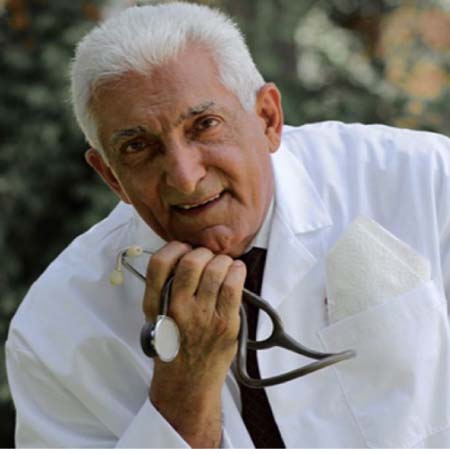
The most common form of arthritis is osteoarthritis. Other common rheumatic conditions include gout, fibromyalgia and rheumatoid arthritis.
Fast facts on arthritis
Here are some key points about arthritis. More detail and supporting information is in the main article.
§ “Arthritis” defines around 200 rheumatic disease and conditions that affect joints.
§ Rheumatic diseases encompass numerous diseases which span from various types of arthritis to osteoporosis and also systemic connective tissue diseases.
§ Types of arthritis such as lupus and rheumatoid arthritis affect multiple organs and cause a long list of symptoms.
§ In the US, there are reported to be 52.5 million adults with some form of arthritis.
§ Arthritis can impair a person’s ability to perform “everyday” tasks.
§ Physical activity has a positive effect on arthritis and can improve pain, function andmental health.
§ The most common co morbid condition experienced with arthritis is heart disease.
§ Arthritis may be caused by injury, abnormal metabolism, genetic makeup, infections or an overactive immune system.
§ Treatment for arthritis aims to control pain, minimize joint damage and improve or maintain quality of life.
§ Arthritis is treated with a combination of medications, physical therapies and patient education and support.
What is arthritis?
Typically, pain, aching, stiffness and swelling in and around one or more joints characterize rheumatic conditions. The symptoms can develop gradually or suddenly. Certain rheumatic conditions can also involve the immune system and various internal organs of the body.6
The term “arthritis” is used to describe numerous rheumatic diseases and conditions that affect joints.
Some forms of arthritis, such as rheumatoid arthritis and lupus, can affect multiple organs and cause widespread symptoms.
Arthritis is more common among adults aged 65 years or older, but people of all ages (including children) can be affected.
Prevalence of arthritis
There are 52.5 million adults in the US, equating to 22.7% of the population, reported to have a form of arthritis, rheumatoid arthritis, gout, lupus or fibromyalgia.1
With people living longer in the US, the prevalence of doctor-diagnosed arthritis is expected to increase. It has been estimated that by the year 2030, 67 million, 25% of the projected total adult population aged 18 years and older, will have doctor-diagnosed arthritis.
Arthritis has a significantly higher age-adjusted prevalence in women (23.9%) than men (18.6%), with the prevalence increasing with age and higher among women than men in every age group.
An estimated 294,000 children under the age of 18 have some form of arthritis or rheumatic condition; this represents approximately 1 in every 250 children in the US.4
Impact of arthritis
Arthritis has a significant impact on individuals, for example:1
§Almost 43.2% (22.7 million) of adults with arthritis report limitations in their usual activities
§40% report that it is “very difficult” or they “cannot do” at least 1 of 9 important daily functional activities
§Almost 8 million adults who report an activity limitation due to arthritis also report severe limitation in their ability to stoop, bend, or kneel, and 6 million cannot walk 0.25 miles
§31% (8.3 million) of working age adults with arthritis report limitations in work.
Impairment in the ability of people with arthritis to perform essential daily tasks may interfere with their work, their purpose in their community, or the care they can provide for their family.
Emotional health
Arthritis has a strong association with major depression, with a risk of 18.1%. This could be due to its role in creating functional limitation. Around 6.6% of adults with arthritis report severe psychological distress.
BMI
Prevalence of arthritis increases with body mass index (BMI). Prevalence increases from 16.3% among underweight and normal adults to 20.3% of overweight adults and 28.9% of obese adults.
Reports among adults by BMI show the following groups express activity limitations:
§38.2% of underweight and normal
§37.2% of overweight
§44.8% of obese.
Arthritis and exercise
Physical activity and exercise have been shown to benefit people with arthritis by improving pain, function and mental health. However, around 24% of adults with arthritis report being physically inactive compared with 18.6% of adults without arthritis.
By partaking in low levels of exercise, individuals with arthritis face placing themselves at risk of conditions associated with lack of activity such as cardiovascular disease, diabetes, obesity and functional limitations.
Risk factors
Certain factors have been shown to be associated with a greater risk of arthritis. Some of these risk factors are modifiable while others are not.
Non-modifiable risk factors:
§Age: the risk of developing most types of arthritis increases with age
§Gender: most types of arthritis are more common in women; 60% of all people with arthritis are women. Gout is more common in men than women
§Genetic: specific genes are associated with a higher risk of certain types of arthritis,.
Modifiable risk factors:
§Overweight and obesity: excess weight can contribute to both the onset and progression of knee osteoarthritis
§Joint injuries: damage to a joint can contribute to the development of osteoarthritis in that joint
§Infection: many microbial agents can infect joints and potentially cause the development of various forms of arthritis
§Occupation: certain occupations that involve repetitive knee bending and squatting are associated with osteoarthritis of the knee.
Co morbidities
Among people with arthritis the most common co morbidities are:
§Heart disease - 24% (11.2 million)
§Chronic respiratory conditions - 19% (9.0 million)
§Diabetes - 16% (7.3 million)
§Stroke - 6.8% (3.2 million).
Risk factors for other chronic conditions are common among US adults with arthritis, such as:
§High blood pressure - 53%
§Physical inactivity - 47%
§High cholesterol - 47%
§Obesity - 36%
§Smoking - 19%.
What causes arthritis?
There is no one cause for arthritis; the cause depends on the type or form of arthritis. Potential causes for arthritis may include:
§Injury - leading to degenerative arthritis
§Abnormal metabolism - leading to gout and pseudo gout
§Inheritance - such as in osteoarthritis
§Infections - such as in the arthritis of Lyme disease
§Overactive immune system - such as RA and SLE.
For many arthritis conditions, there is a strong element of chance involved as to what is the main cause. However, for most types of arthritis, the cause is a combination of many factors working together.
A person may naturally be more susceptible to certain conditions due to genetic makeup. If more susceptible, external factors such as previous injury, infection, smoking and physically demanding occupations could play a part.
Author Dr Azadeh Senior Lecturer at the University of the Gambia, Senior Physician, Senior Consultant in Obstetrics and Gynaecology.


